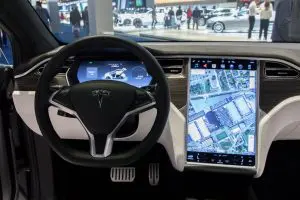Don’t rely on autopilot: Car safety tech still flawed, inconsistent
IIHS report on driver-assistance technology shows its flaws
New report from IIHS shows driver assist technology is still flawed and is no substitute for a fully attentive human driver. If you’re not paying attention, driver assist systems can even land you in a crash.
 The Insurance Institute for Highway Safety, known for its extensive crash testing and safety ratings, investigated just how reliable driver assistance technology is. Their findings varied by brand. But, the overall conclusion was that autonomous vehicle technology has a long way to go before human drivers can feel comfortable giving up the steering wheel.
The Insurance Institute for Highway Safety, known for its extensive crash testing and safety ratings, investigated just how reliable driver assistance technology is. Their findings varied by brand. But, the overall conclusion was that autonomous vehicle technology has a long way to go before human drivers can feel comfortable giving up the steering wheel.
The 2017 BMW 5-series, 2017 Mercedes-Benz E-Class, 2018 Tesla Model 3 and 2016 Model S, and 2018 Volvo S90 were evaluated.
What is driver assistance technology?
Driver assistance technology refers to the features in a car designed to help prevent collisions. It’s not “self-driving” exactly, but it is a precursor to autonomous vehicles: semi-automated technology designed to compensate for human error. Some examples include:
- Adaptive cruise control
- Active lane keeping
- Automatic braking
The Society of Automotive Engineers (SAE) International ranks this kind of safety tech on a scale from zero to five (full autonomy). Features like the ones listed above are considered Level 2.
Car safety systems inconsistent
Driver assistance tech has increasingly become more common in new vehicles. Tech has pushed the standard higher for vehicle safety, requiring that certain features be made standard in order for a vehicle to qualify for a higher safety rating. As safety ratings are an important factor for many car buyers, automakers must include these features to keep up with the competition. It’s a good thing for highway safety, at least in theory. This new report suggests that while AI-powered tech has the potential to prevent accidents, it is also flawed. The researchers found that driver-assist technology performance was inconsistent across different brands – some performed better than others. Overall, none of the vehicles tested performed as intended 100% of the time, and there was no conclusive “winner” among them. In the road tests the researchers performed, the safety technology failed in various traffic situations. Automation failures ranged from the annoying (unnecessary braking) to the dangerous (failing to brake for stopped traffic, or veering into the wrong lane).
Drivers must pay attention
While safety tech features can be an aid to drivers and help reduce crashes, the danger lies in relying on the technology too much. The promise of automatic braking or lane-keeping can lull drivers into a false sense of security, causing them to be less alert or responsive than they might otherwise be. The fact remains that drivers must pay full attention to the road and their vehicle at all times and be ready to intervene when automated features can’t handle the complex realities of driving.
If you were involved in a car accident, contact a Scranton car accident lawyer at Munley Law to schedule a free consultation.
Posted in Car Accidents.
Tagged Insurance









